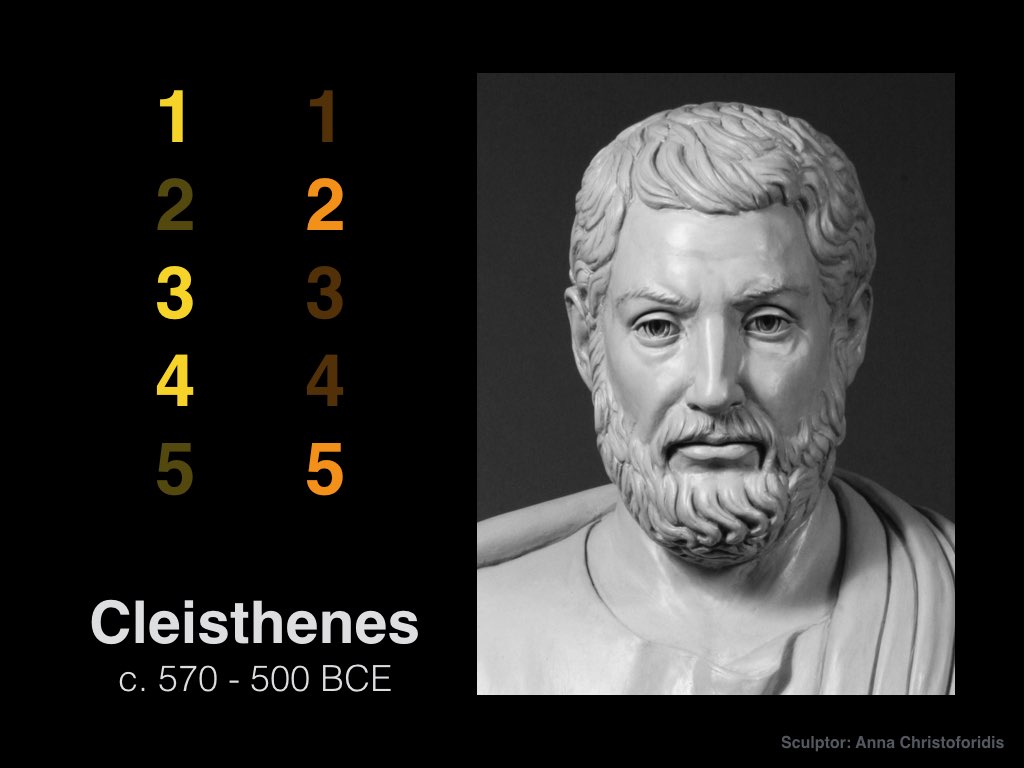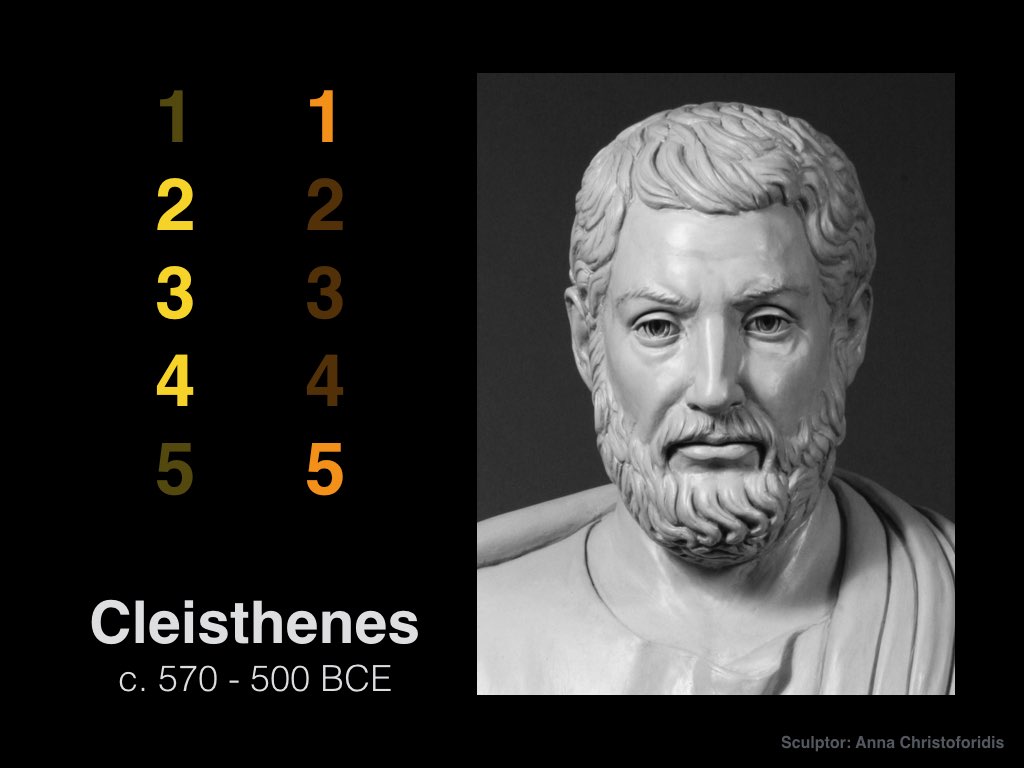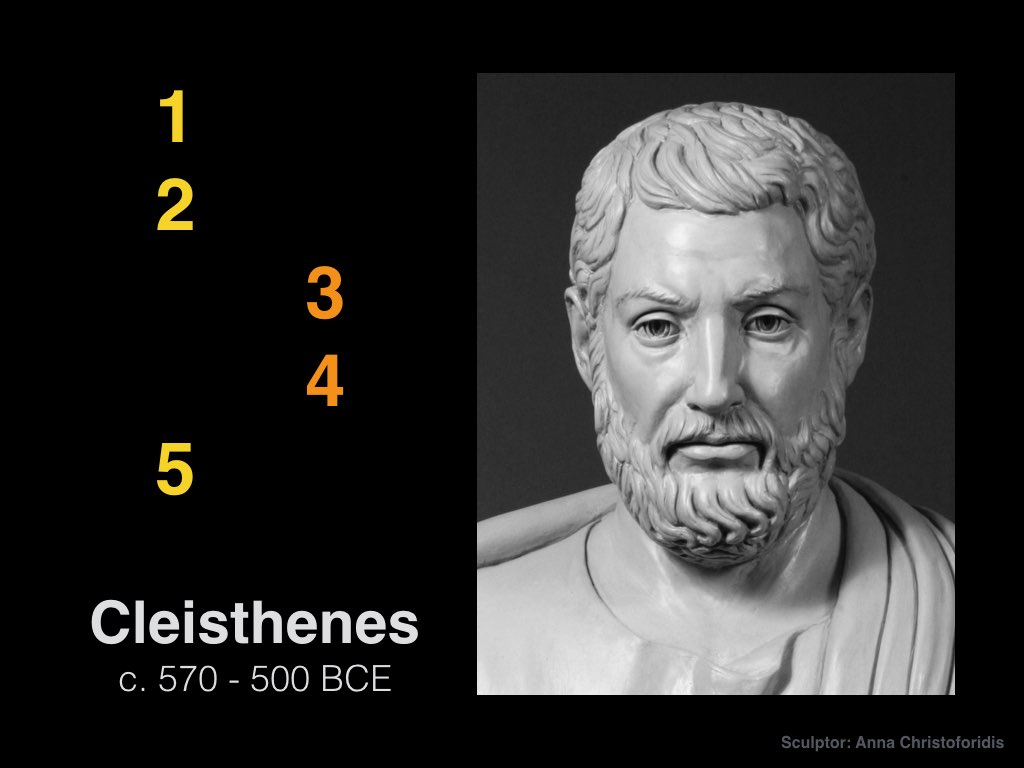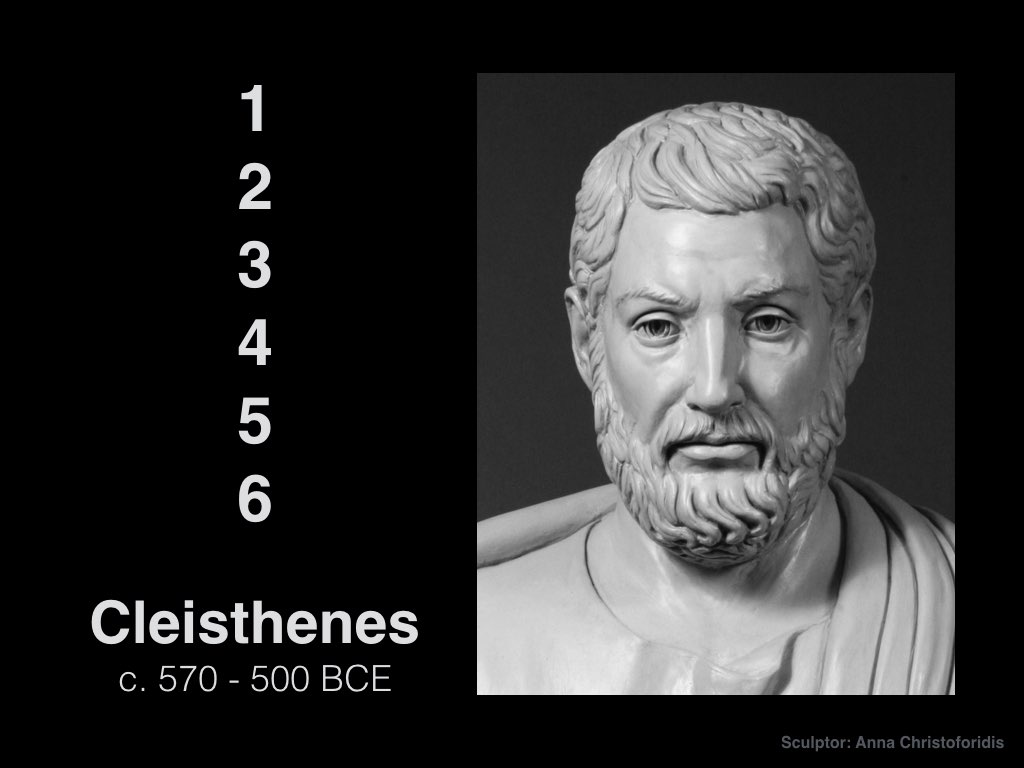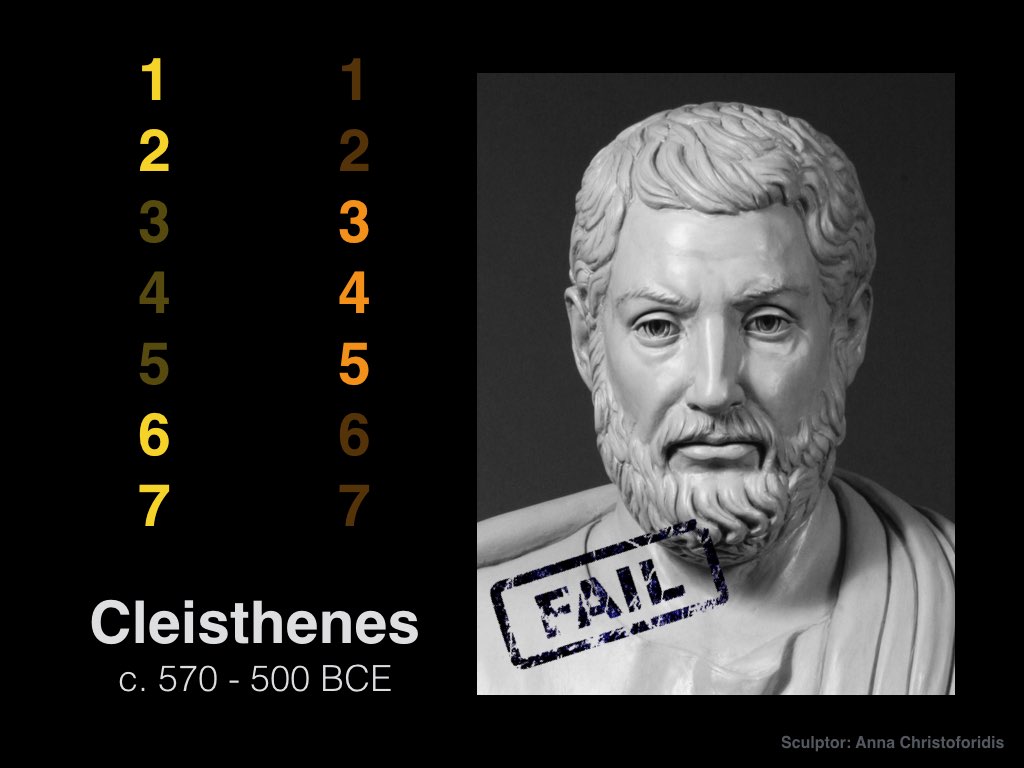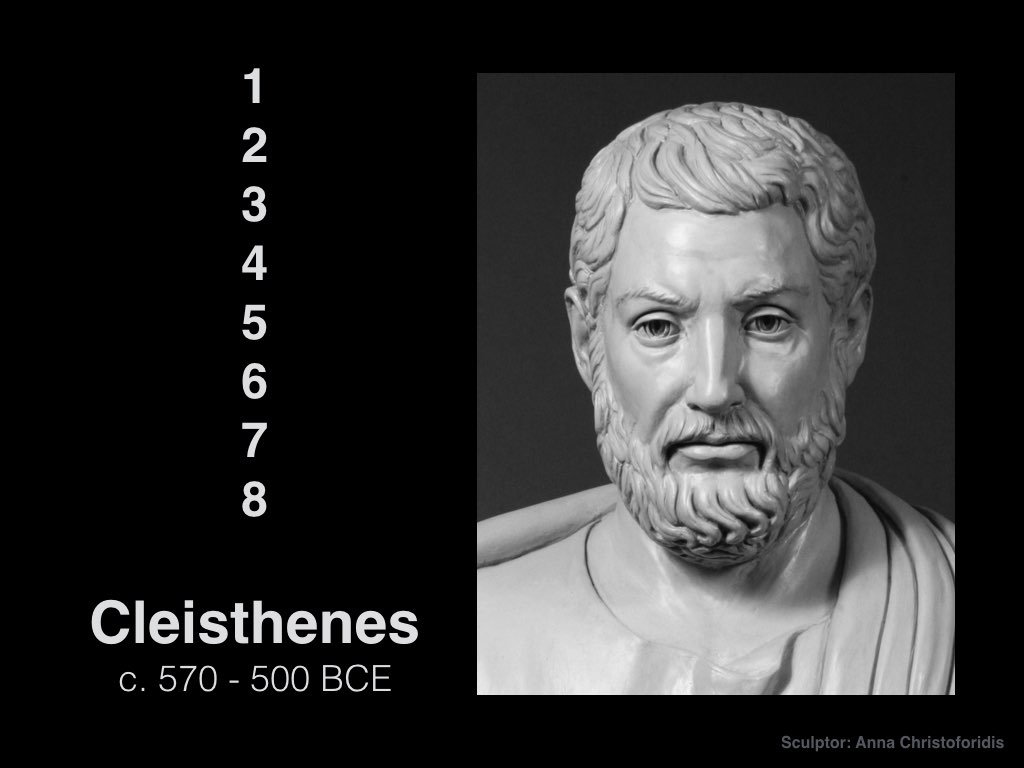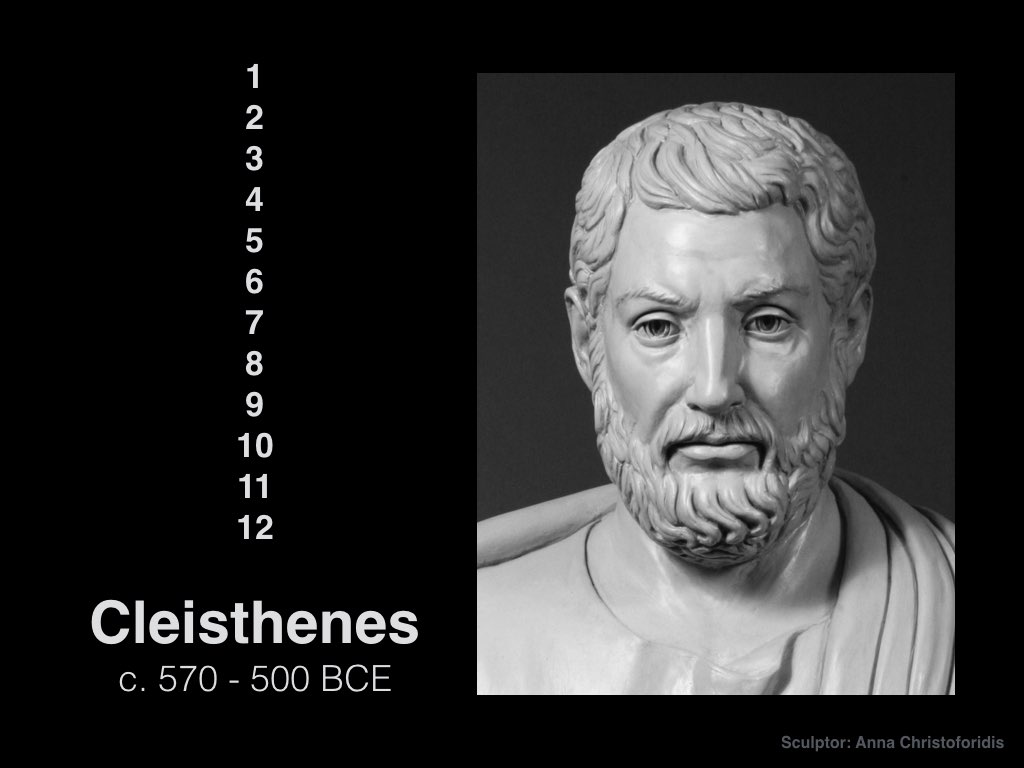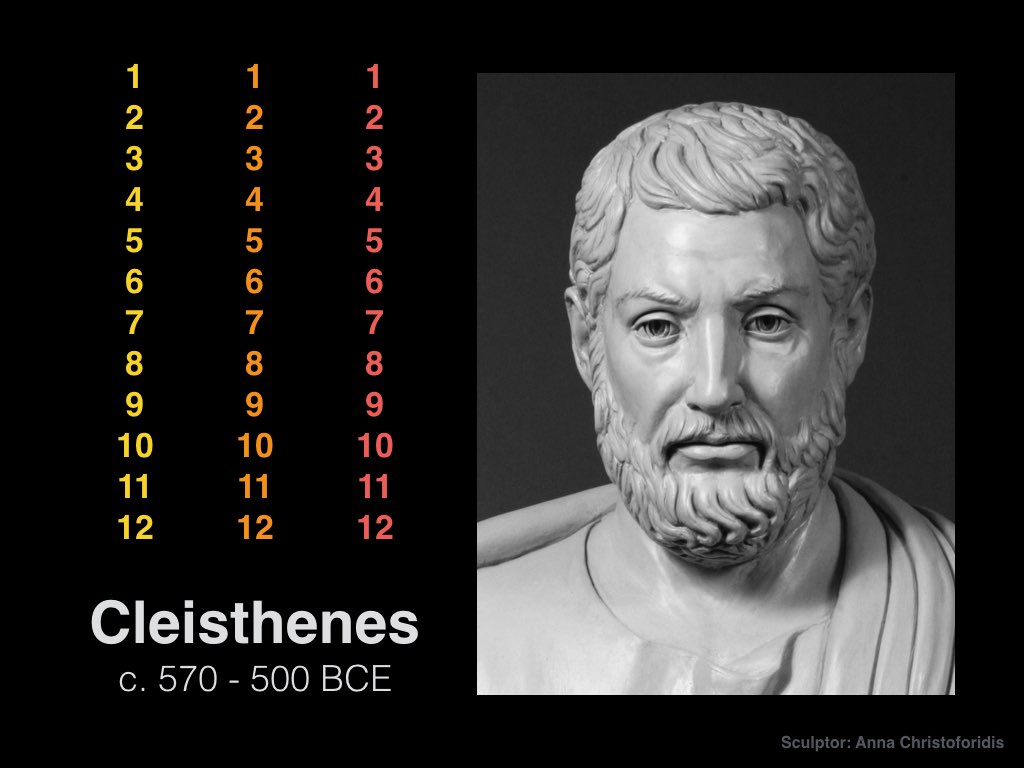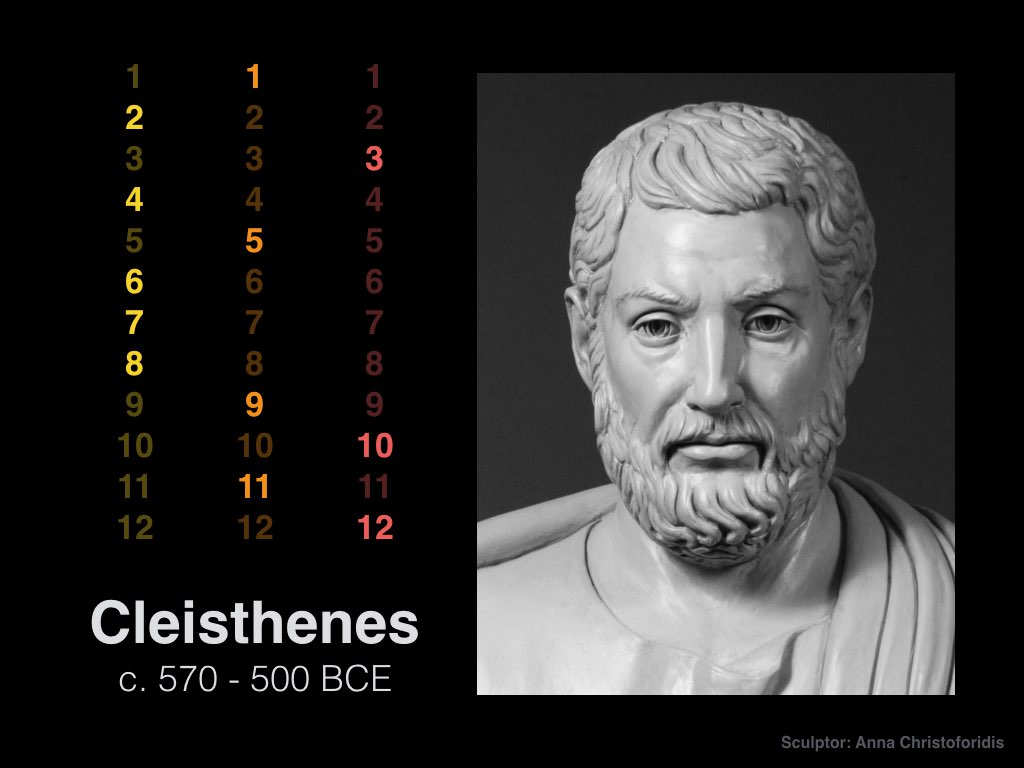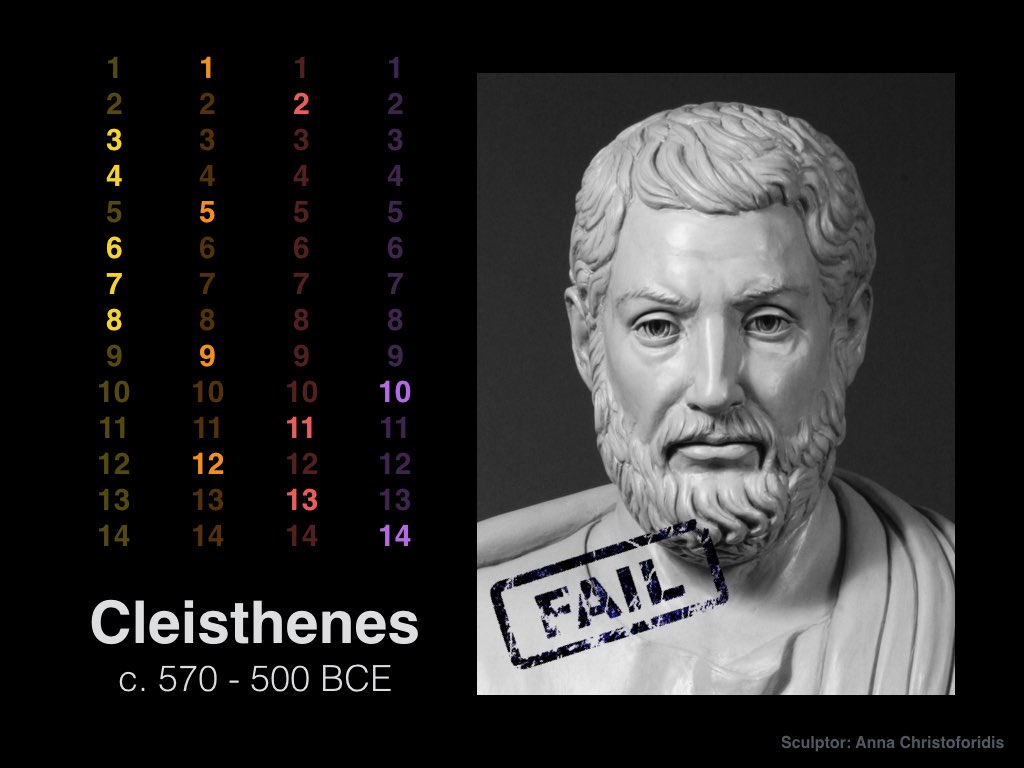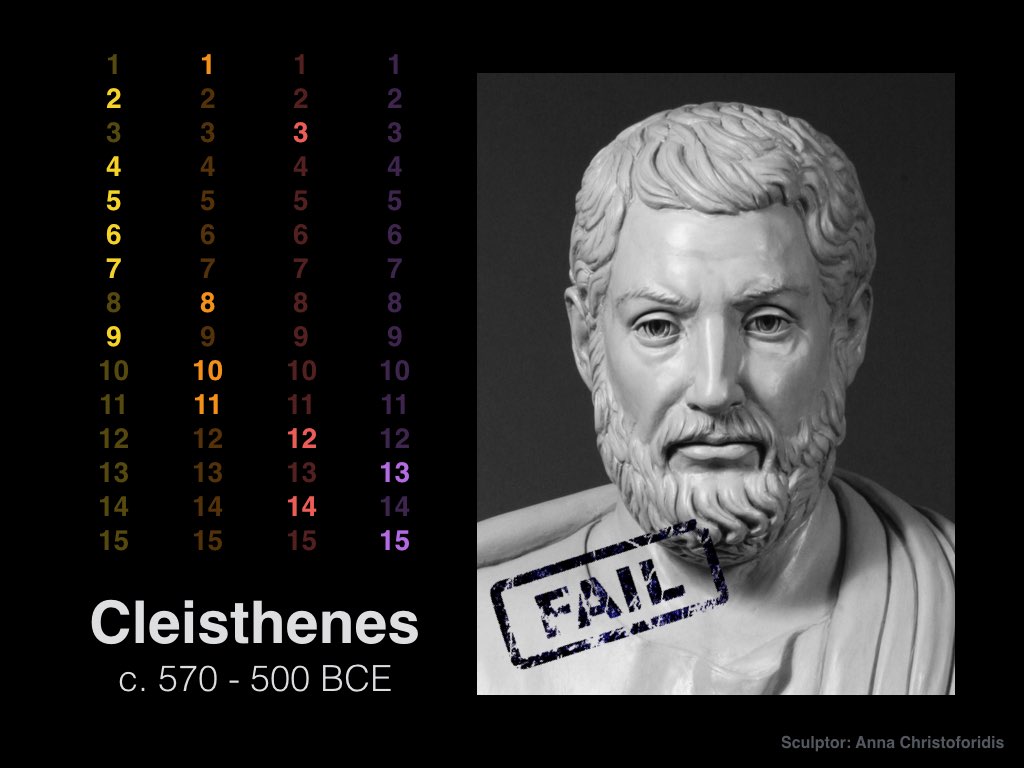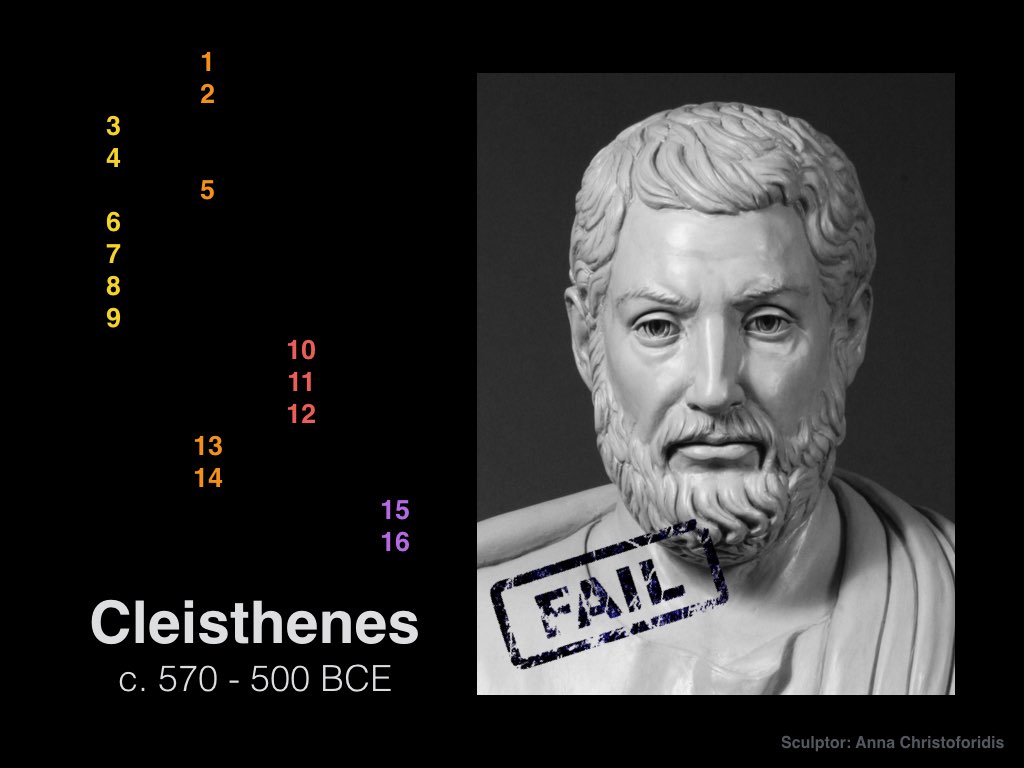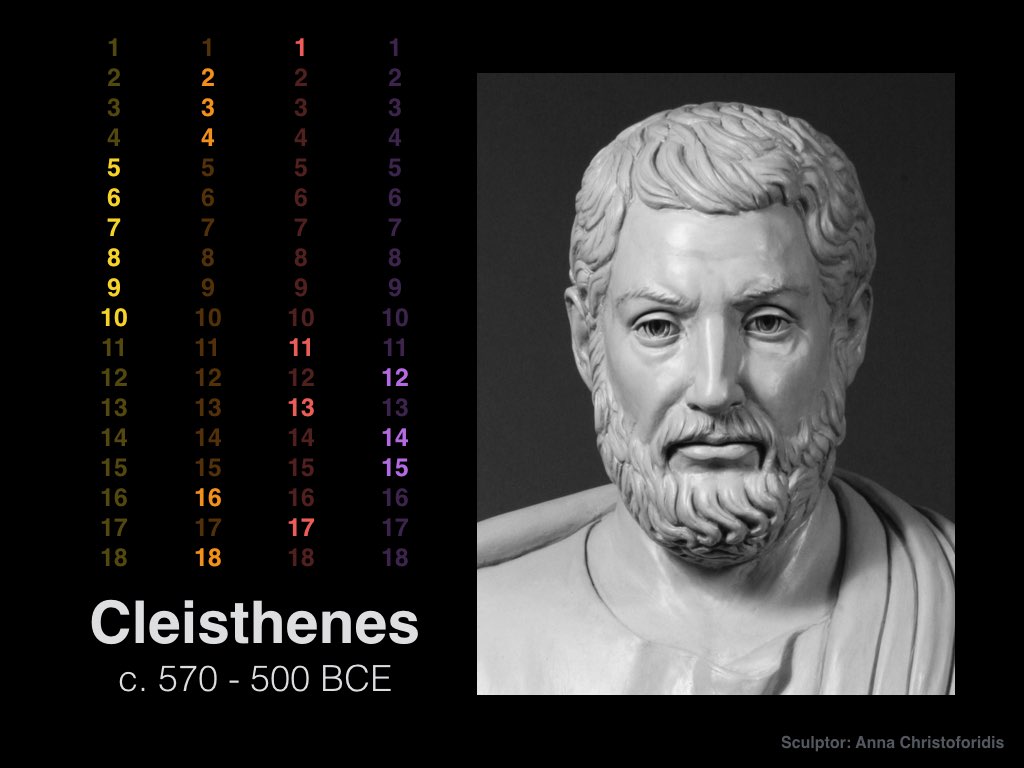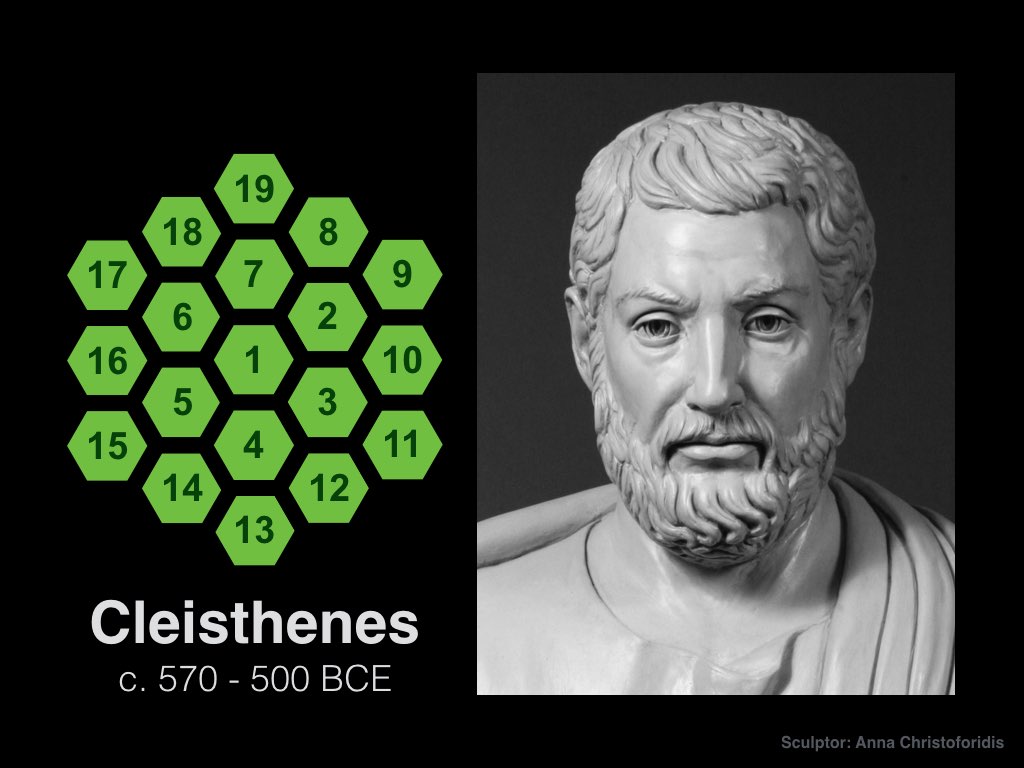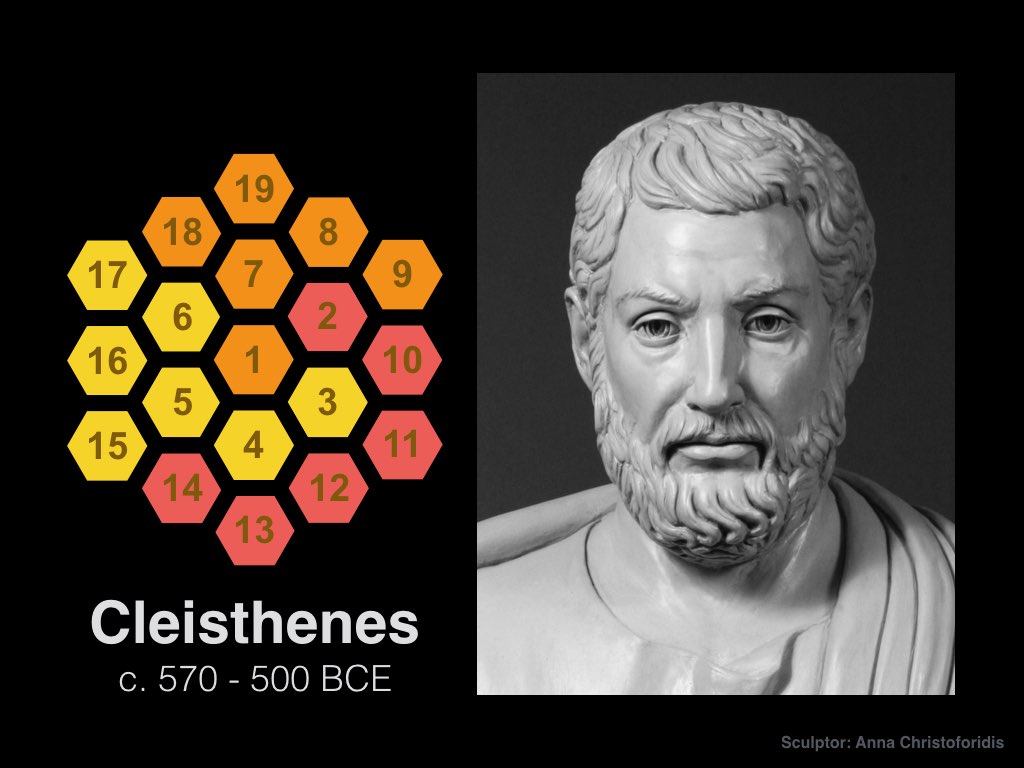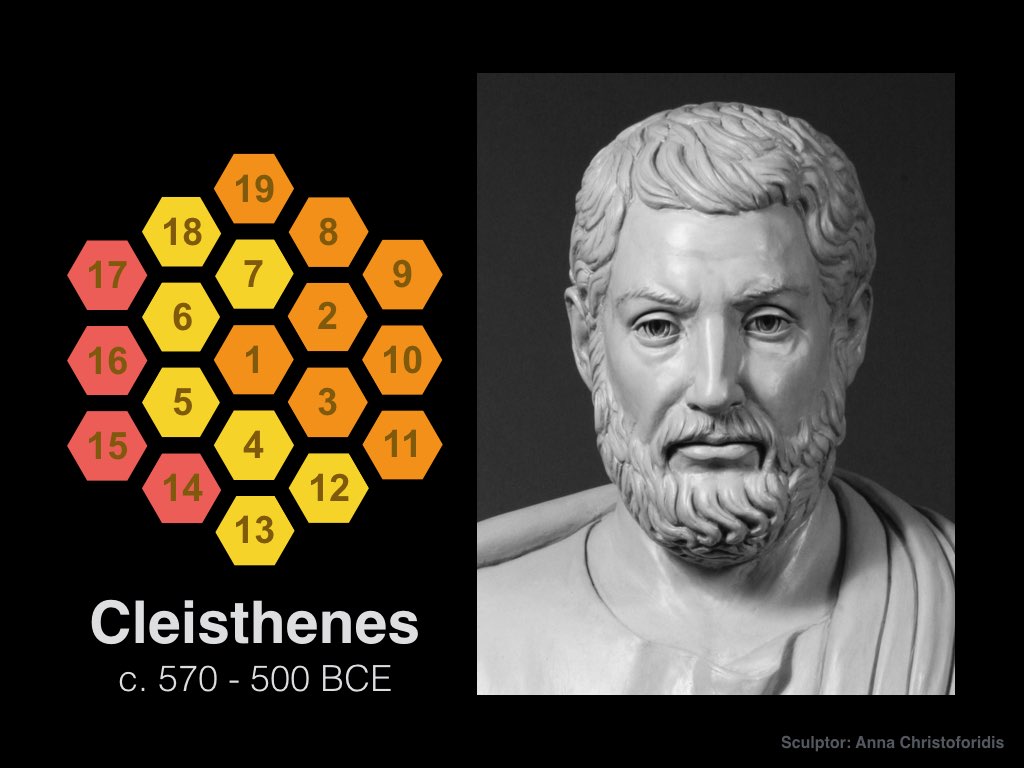Virtuous Democracy
(Gordon Hamilton, 2005)
Many top quality creative mathematics classrooms get all students to make conjectures about their mathematics explorations. True conjectures are easy to get excited about, but the mark of a strong mathematics classroom is that all students feel comfortable enough to make a false conjectures. Alison Hansel’s (twitter: @ms_hansel) class is particularly excellent.
We can think of conjectures as commentary on the output of a puzzle. The complement of conjectures are constraints. Sometimes students should explore adding new constraints to existing puzzles. If the constraints are too harsh, the puzzle may have no solution. That’s good for students to discover.
Not all constraints are created equal. Creative students should try to develop an aesthetic sense about what makes a beautiful constraint. There is no strong rule for this, but I’ll give you two examples and let you draw your own conclusions…
Example of a constraint which sounds ugly: “Numbers 2, 13, 14 and 17 must be Yellow.”
Example of a constraint which sounds beautiful: “All the yellow numbers must be consecutive.”
I invite you to explore virtuous democracy – both through making conjectures and adding your own constraints.
Standards for Mathematical Practice
MathPickle puzzle and game designs engage a wide spectrum of student abilities while targeting the following Standards for Mathematical Practice:
MP1 Toughen up!
Students develop grit and resiliency in the face of nasty, thorny problems. It is the most sought after skill for our students.
MP2 Think abstractly!
Students take problems and reformat them mathematically. This is helpful because mathematics lets them use powerful operations like addition.
MP3 Work together!
Students discuss their strategies to collaboratively solve a problem and identify missteps in a failed solution. MathPickle recommends pairing up students for all its puzzles.
MP4 Model reality!
Students create a model that mimics the real world. Discoveries made by manipulating the model often hint at something in the real world.
MP5 Use the right tools!
Students should use the right tools: 0-99 wall charts, graph paper, mathigon.org. etc.
MP6 Be precise!
Students learn to communicate using precise terminology. MathPickle encourages students not only to use the precise terms of others, but to invent and rigorously define their own terms.
MP7 Be observant!
Students learn to identify patterns. This is one of the things that the human brain does very well. We sometimes even identify patterns that don't really exist 😉
MP8 Be lazy!?!
Students learn to seek for shortcuts. Why would you want to add the numbers one through a hundred if you can find an easier way to do it?
Please use MathPickle in your classrooms. If you have improvements to make, please contact me. I'll give you credit and kudos 😉 For a free poster of MathPickle's ideas on elementary math education go here.

